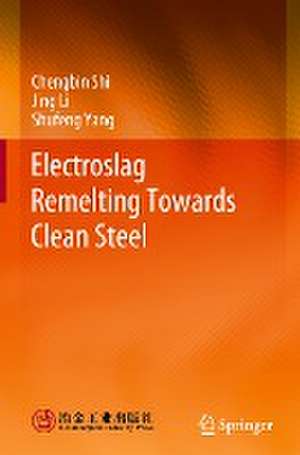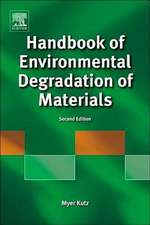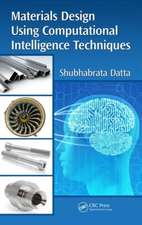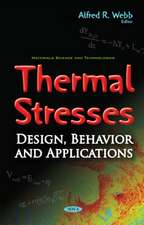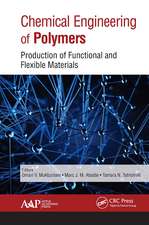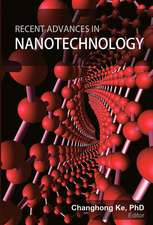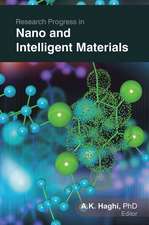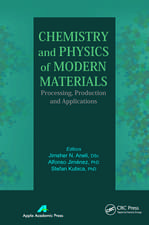Electroslag Remelting Towards Clean Steel
Autor Chengbin Shi, Jing Li, Shufeng Yangen Limba Engleză Hardback – 23 iun 2023
| Toate formatele și edițiile | Preț | Express |
|---|---|---|
| Paperback (1) | 928.84 lei 38-44 zile | |
| Springer Nature Singapore – 24 iun 2024 | 928.84 lei 38-44 zile | |
| Hardback (1) | 1106.79 lei 3-5 săpt. | |
| Springer Nature Singapore – 23 iun 2023 | 1106.79 lei 3-5 săpt. |
Preț: 1106.79 lei
Preț vechi: 1349.74 lei
-18% Nou
Puncte Express: 1660
Preț estimativ în valută:
211.81€ • 218.52$ • 179.27£
211.81€ • 218.52$ • 179.27£
Carte disponibilă
Livrare economică 12-26 februarie
Preluare comenzi: 021 569.72.76
Specificații
ISBN-13: 9789819932566
ISBN-10: 9819932564
Pagini: 246
Ilustrații: X, 246 p. 136 illus., 96 illus. in color.
Dimensiuni: 155 x 235 mm
Greutate: 0.39 kg
Ediția:2023
Editura: Springer Nature Singapore
Colecția Springer
Locul publicării:Singapore, Singapore
ISBN-10: 9819932564
Pagini: 246
Ilustrații: X, 246 p. 136 illus., 96 illus. in color.
Dimensiuni: 155 x 235 mm
Greutate: 0.39 kg
Ediția:2023
Editura: Springer Nature Singapore
Colecția Springer
Locul publicării:Singapore, Singapore
Cuprins
1 Introduction to Electroslag Remelting.- 2 Clean Steel Production by Electroslag Remelting.- 3 Deoxidation of ESR and Its Correlation with Oxide Inclusions.- 4 Reoxidation of Liquid Steel during ESR and Its Effect on Oxide Inclusions.- 5 Desulfurization in Electroslag Remelting.- 6 Sulfide and Nitride Inclusion Evolution during ESR.- 7 Evolution of Original Oxide Inclusions during ESR.- 8 Evolution of Oxide Inclusions in Si-Mn-killed Steel during ESR.- 9 Modification of Alumina and MgO·Al2O3 Inclusions by Calcium Treatment during ESR.- 10 Role of Calcium Modification of Oxide Inclusions during ESR on Primary Carbides.
Notă biografică
Chengbin SHI received his Ph.D. in Metallurgical Engineering from University of Science and Technology Beijing in January 2013. He is currently a professor, deputy director of the Institute of Advanced Steel, University of Science and Technology Beijing. His research interests focus on inclusion control and clean steel technology, electroslag remelting, tool steel and heat-resistant steel. He serves as board member for 3 international journals Metallurgical and Materials Transactions B, International Journal of Minerals, Metallurgy and Materials and Journal of Iron and Steel Research International, and committee member of The Electrometallurgy Association, The Chinese Society for Metals. He was awarded three provincial and ministerial science and technology awards. He has authored over sixty papers, one monograph, and is the holder of eight patents.
Jing LI received his Ph.D. in Ferrous Metallurgy from University of Science and Technology Beijing in 1999. He is currently a professor at State Key Laboratory of Advanced Metallurgy, director of the Institute of Advanced Steel, University of Science and Technology Beijing. He serves as secretary general of the Electrometallurgy Association, the Chinese Society for Metals. His research fields include electroslag remelting technology, advanced metallic materials development, secondary refining, application of rare earth in steel and oxide metallurgy, BOF/EAF steelmaking. He was awarded the First Metallurgical Advanced Youth Science and Technology Award, The Chinese Society for Metals. He has formulated 1 national standard for metallurgical industry. Professor Li was awarded 11 provincial and ministerial level of scientific and technological progress awards, authored 16 patents, published 2 monographs and over 100 publications in peer-review research journals.
Shufeng YANG received his Ph.D. in Ferrous Metallurgy from University of Science and Technology Beijing in 2011. He is currently a professor and deputy director at State Key Laboratory of Advanced Metallurgy, University of Science and Technology Beijing. He serves as recipient of outstanding youth science foundation of National Nature Science Foundation of China, key reader of Metallurgical & Materials Transactions B, youth editorial member of IJMMM and JISRI. His research interests focus on clean steel production, smelting and preparation of Ni-based superalloys.
Jing LI received his Ph.D. in Ferrous Metallurgy from University of Science and Technology Beijing in 1999. He is currently a professor at State Key Laboratory of Advanced Metallurgy, director of the Institute of Advanced Steel, University of Science and Technology Beijing. He serves as secretary general of the Electrometallurgy Association, the Chinese Society for Metals. His research fields include electroslag remelting technology, advanced metallic materials development, secondary refining, application of rare earth in steel and oxide metallurgy, BOF/EAF steelmaking. He was awarded the First Metallurgical Advanced Youth Science and Technology Award, The Chinese Society for Metals. He has formulated 1 national standard for metallurgical industry. Professor Li was awarded 11 provincial and ministerial level of scientific and technological progress awards, authored 16 patents, published 2 monographs and over 100 publications in peer-review research journals.
Shufeng YANG received his Ph.D. in Ferrous Metallurgy from University of Science and Technology Beijing in 2011. He is currently a professor and deputy director at State Key Laboratory of Advanced Metallurgy, University of Science and Technology Beijing. He serves as recipient of outstanding youth science foundation of National Nature Science Foundation of China, key reader of Metallurgical & Materials Transactions B, youth editorial member of IJMMM and JISRI. His research interests focus on clean steel production, smelting and preparation of Ni-based superalloys.
Textul de pe ultima copertă
This book introduces the results that the authors have achieved on the study of functional principle of electroslag remelting for production of high-quality clean steel. The dependence of oxygen, sulfur, and non-metallic inclusions on the processing parameters of electroslag remelting is assessed. The fundamentals and technologies of clean steel production by electroslag remelting have been applied in the round to discuss oxygen, sulfur, and non-metallic inclusions evolution and control. A general concluding remark and a perspective for future work are present. The book is likely to be of interest to university teachers, researchers, R&D engineers, and graduate students in material processing and pyrometallurgy who wish to explore innovative technologies that lead to more energy-efficient and environmentally sustainable clean steel production.
Caracteristici
Shares insights into an improved functional principle of high-quality clean steel production by electroslag remelting Provides the state of the art in lowering the oxygen content and sulfur content of steel during ESR Assesses the influence of the processing parameters of electroslag remelting on the oxide inclusions
